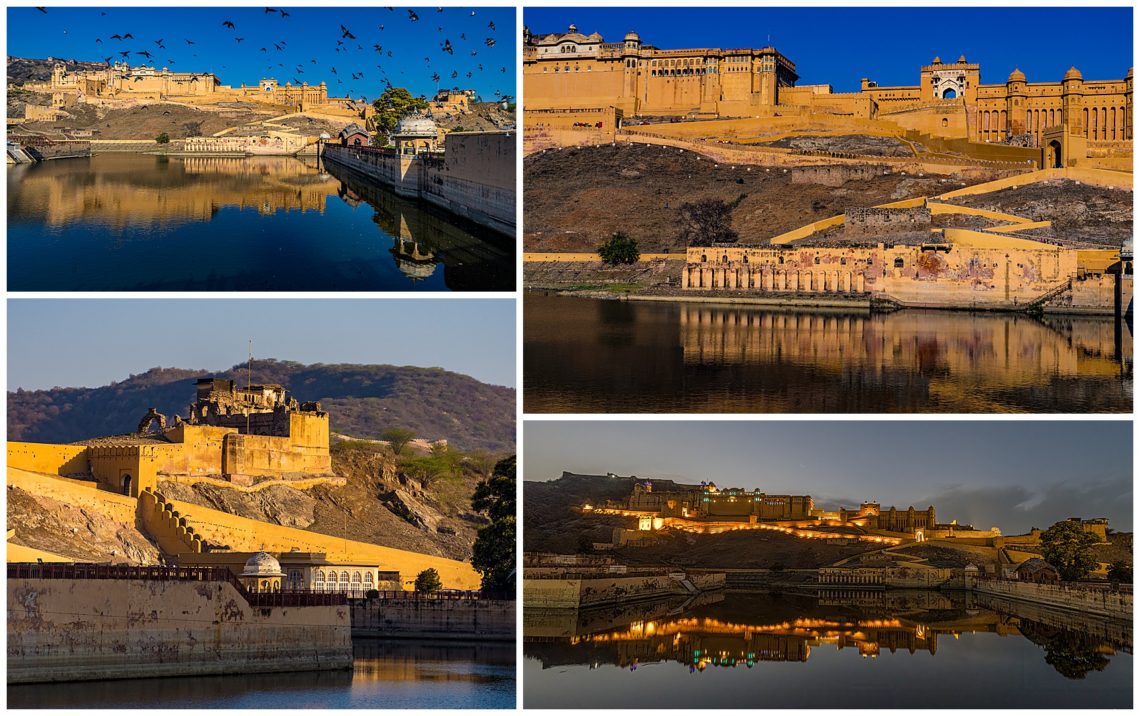
Jaipur is the capital of Rajasthan and holds the distinction of being the first planned city in India. It is also called the “Pink City” and is a destination for romance. This metropolis combines the advantages of a new city with the charm of an ancient heritage city. It has magnificent palaces, forts, temples, parks, and step wells. In addition to the heritage and rich history, Jaipur is also known for their textiles and colored gems. As mentioned before, we visited Jaipur in 1995 enroute to see the Pushkar camel fair and only remember seeing Hawa Mahal and the silly tourist elephants riding up to the fort. It’s funny how you can return to the same place and not recognize it.
Above are images of the Amber Fort. Perched high on a hill, it is the principal tourist attraction in Jaipur. Amber Palace and Amber Fort are considered as one destination. Both structures are connected by an underground path which was built as an escape for the Royal Family.
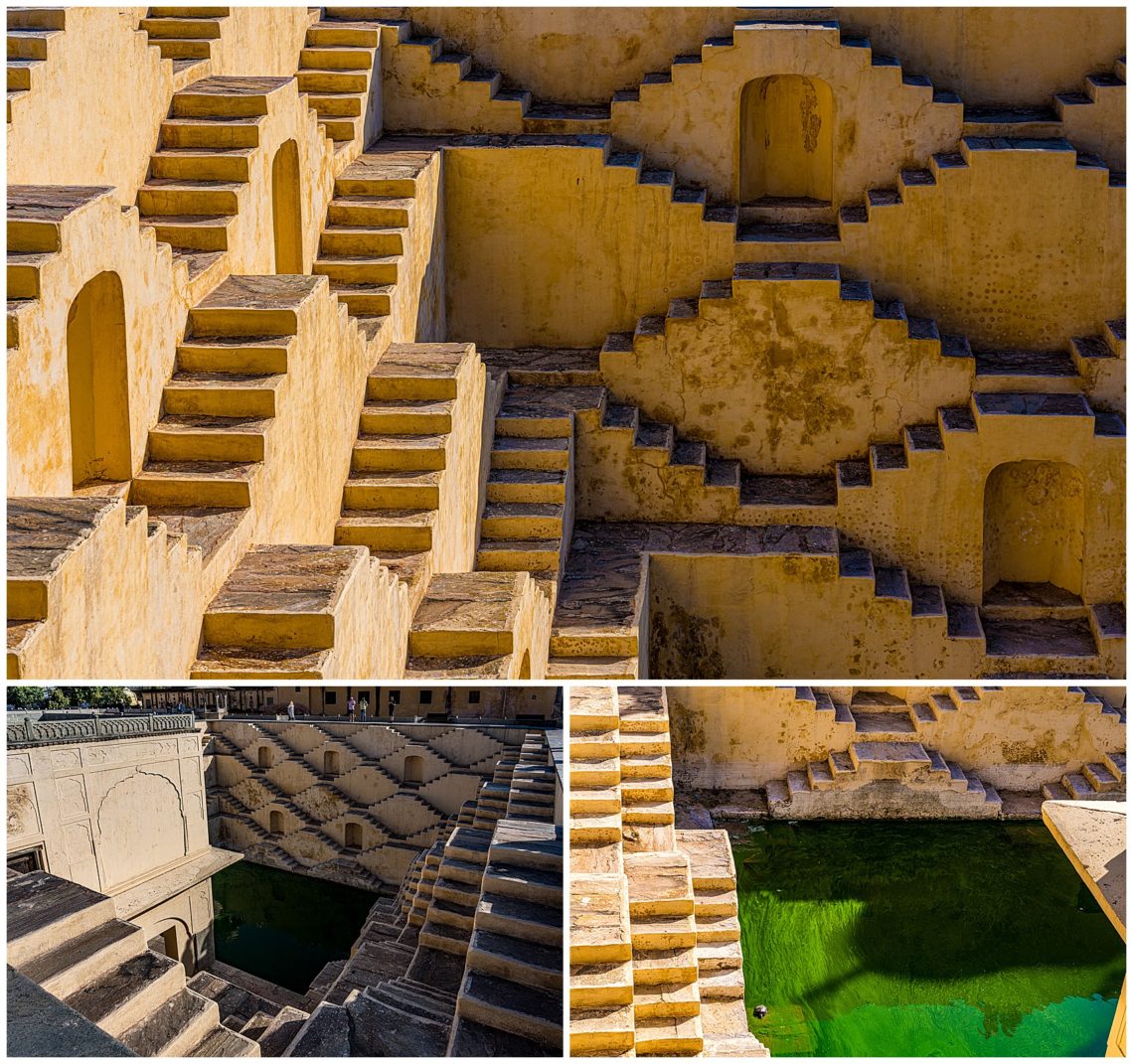
We just got introduced to our first stepwell in Rajasthan. We had no clue these architectural gems existed. It turns out that Stepwells are wells, cisterns or ponds with a long corridor of steps that go down to the water level. These structures are quite ingenious in a desert environment or under drought conditions, and provided year-round access to ground water in ancient times. They were often quite decorated with ornate designs, and became monuments. We saw our first stepwell in Jaipur, Panna Meena Ka Kund, which was built in the 16th Century to store water. Located near the Amber Fort, it is an 8-story gem. It’s quite an engineering feat as it appears endless and is quite mesmerizing. It is now closed for people to walk down due to a tragic fall by a visitor.
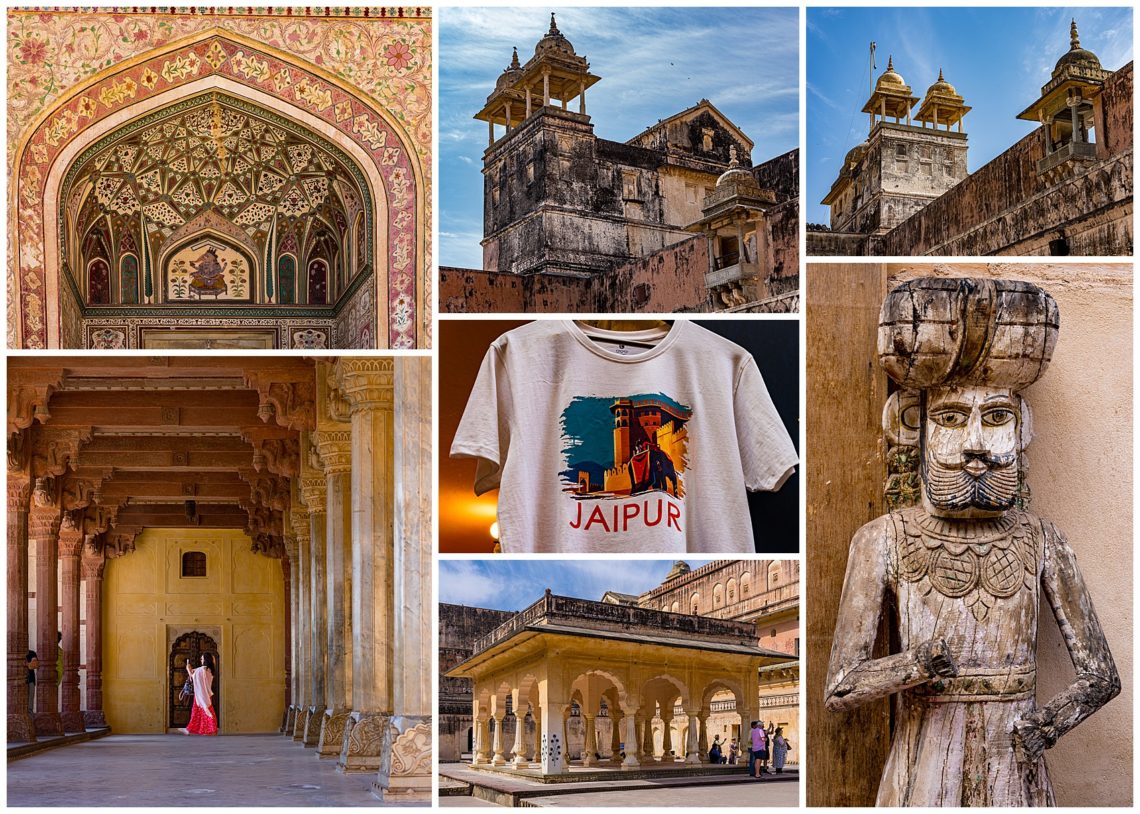
Here are some views from Jal Mahal, a stunning palace known for its unique architectural beauty and picturesque setting on a lake with strong reflections, as well as images from the interiors of the Amber Palace.
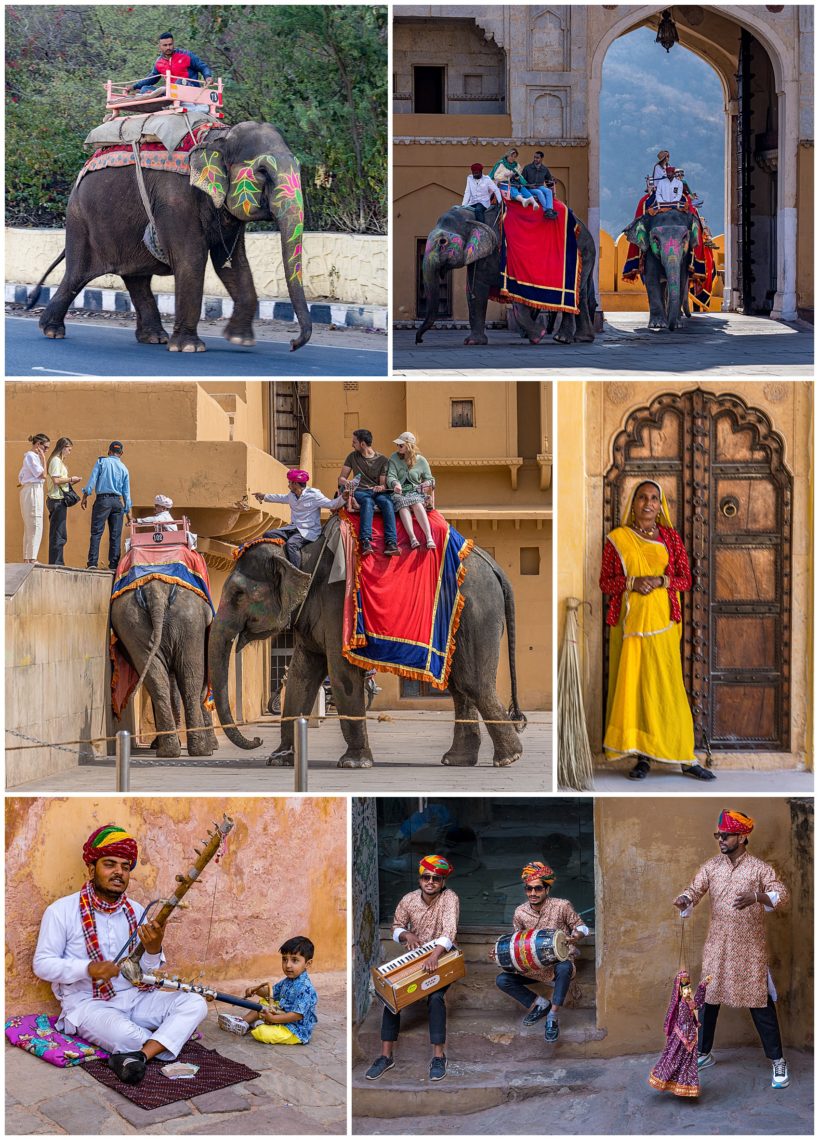
You can walk up to the Amber Fort or ride an elephant up on baskets. There are also wonderful musicians with their hat out to collect donations.
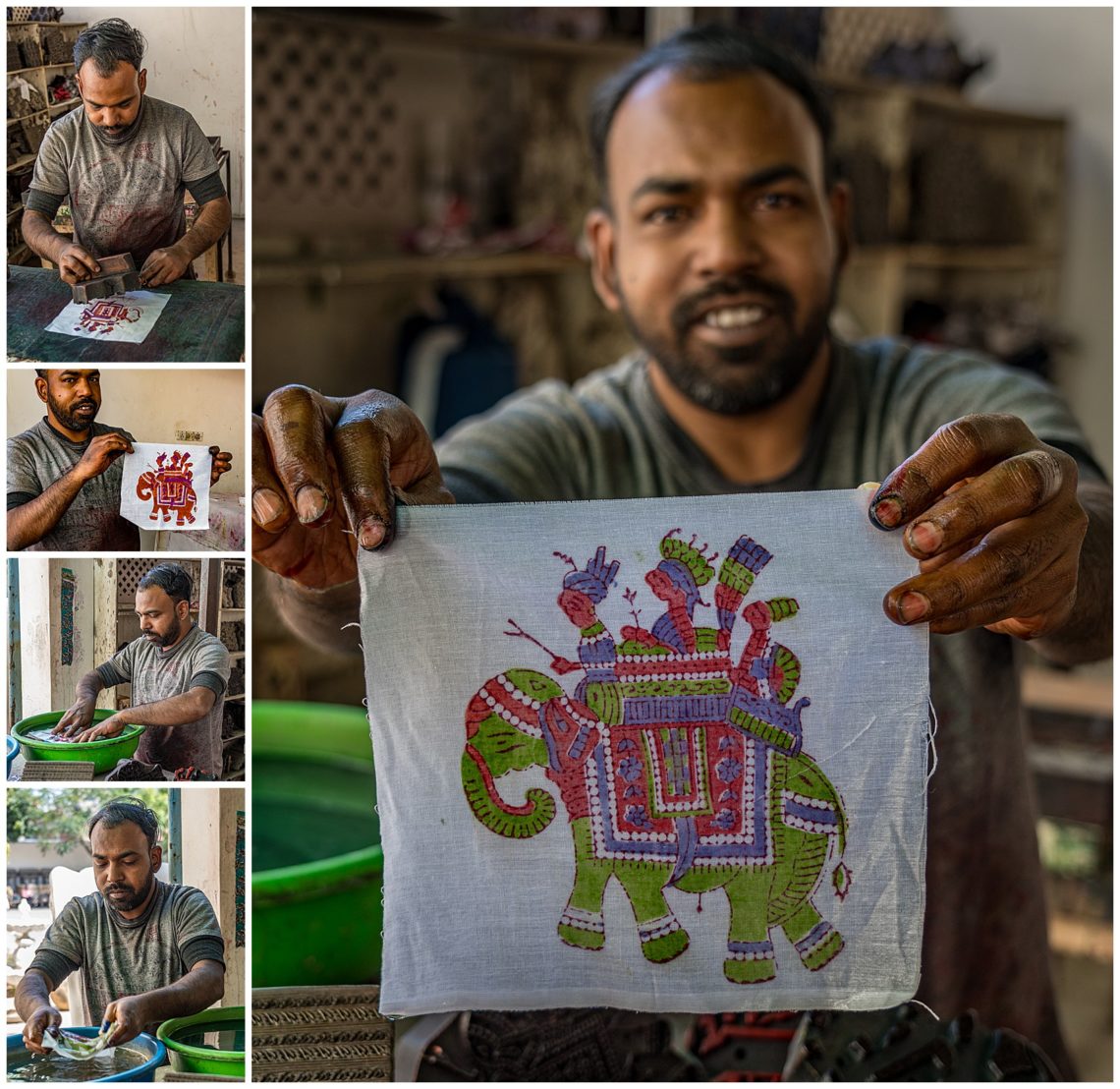
Jaipir is known for their textiles, so we saw several demos by craftsmen. This is one form. The cloth material is embedded with crystals that change color with time. In normal production, the stamped cloth is placed in the sun for up to two weeks to reveal the final pattern. This demonstration used special solutions to speed up the process.
The artist first uses a single color dye on a stamp (upper left), and shows us the red elephant scene (second row-left). After rinsing the cloth to accelerate the normal sunshine treatment (third row-left), he cleans it with water (bottom-left), then holds up the image in its final multi-color form (right).
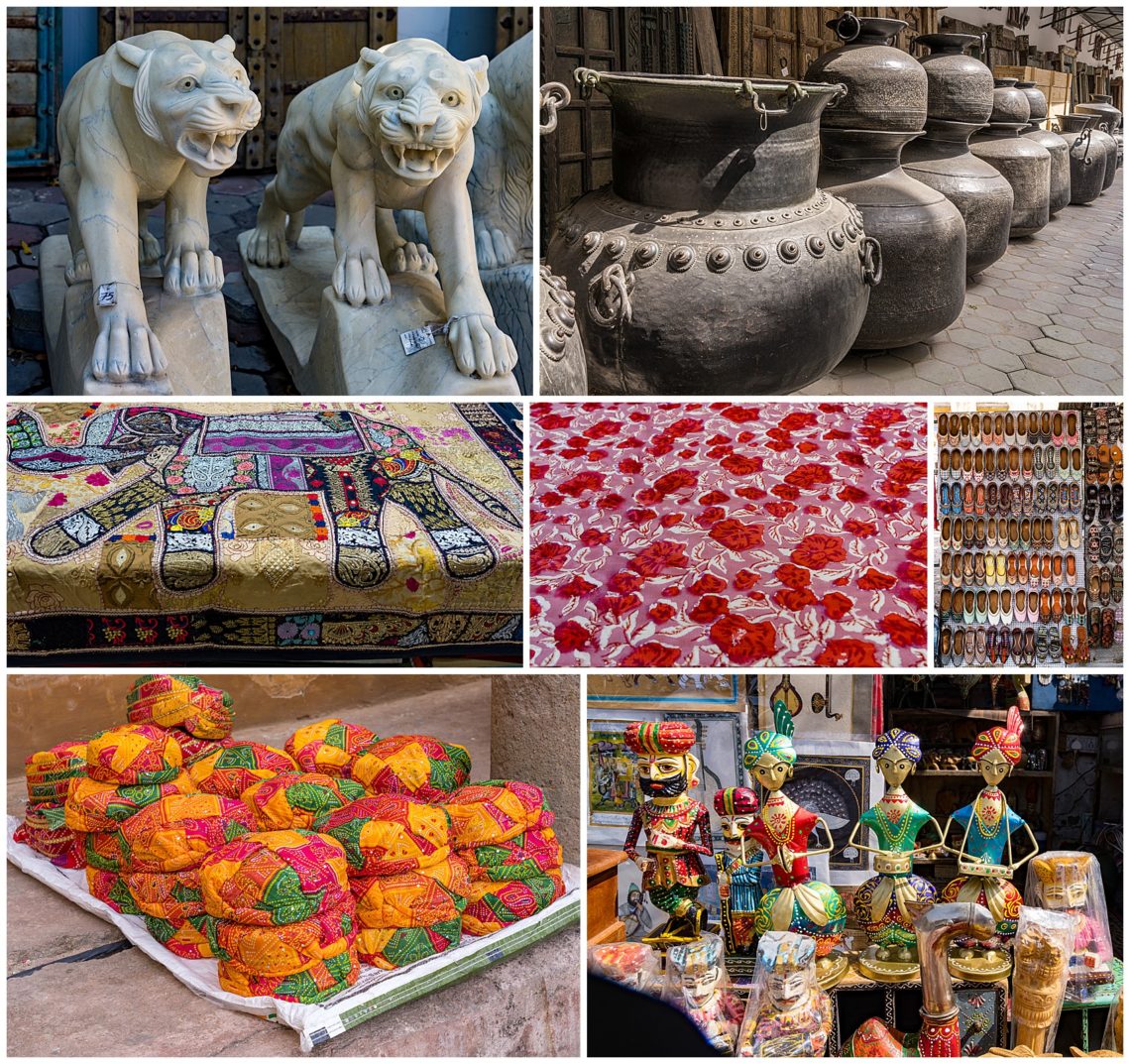
Local Markets have a lot of crafts and textiles for sale.
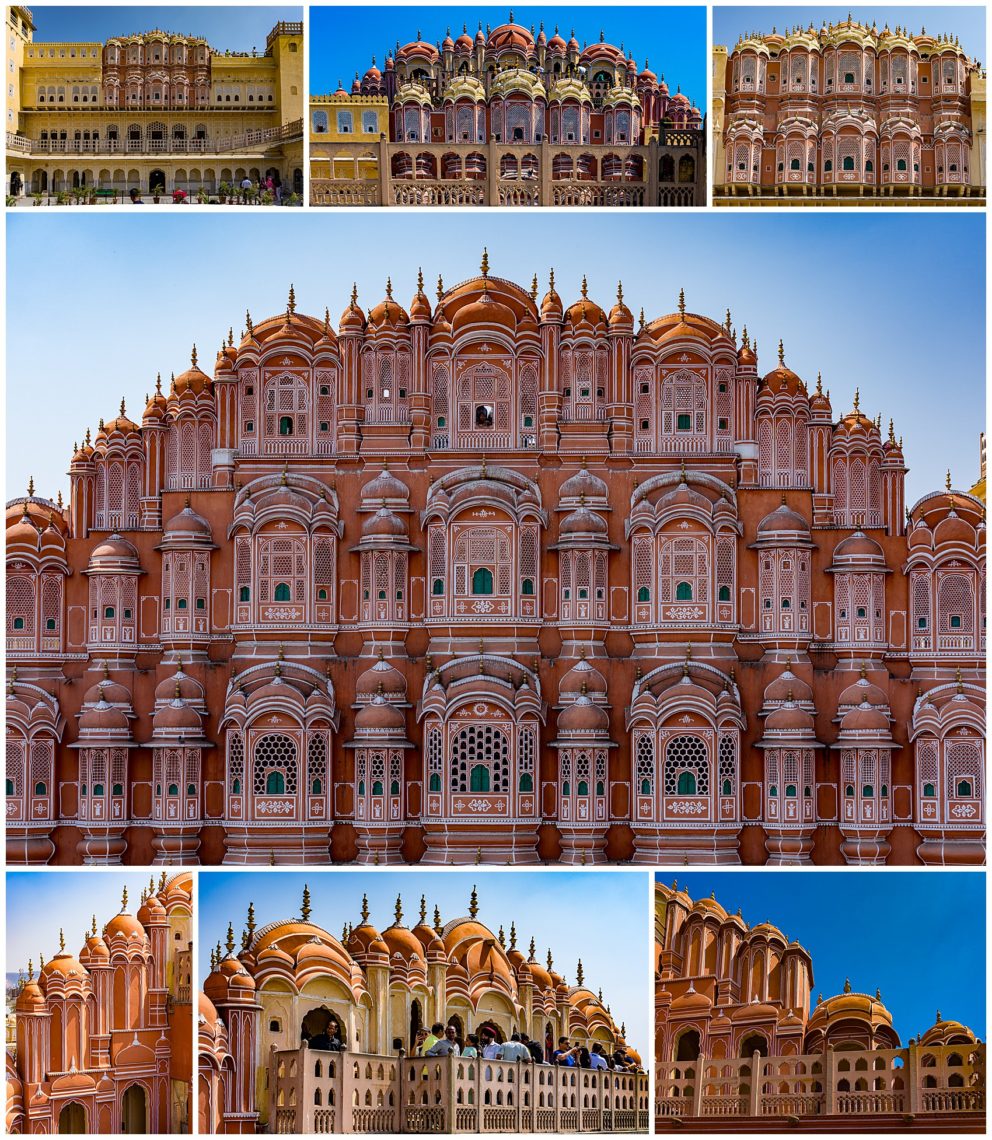
Hawa Mahal is a 5-story palace adjacent to the royal ladies quarters. Built out of red and pink sandstone, there are 953 windows, where the royal ladies could peek at life outside the palace, including seeing parades and local people without themselves being seen.
In 1995, we only saw the facade in a mid-afternoon harsh light. This time, we had a chance to climb up to a restaurant across the street as well as steps inside, to see the palace from different perspectives. It looks somewhat like a honeycomb and considered a must-see when you visit Jaipur.
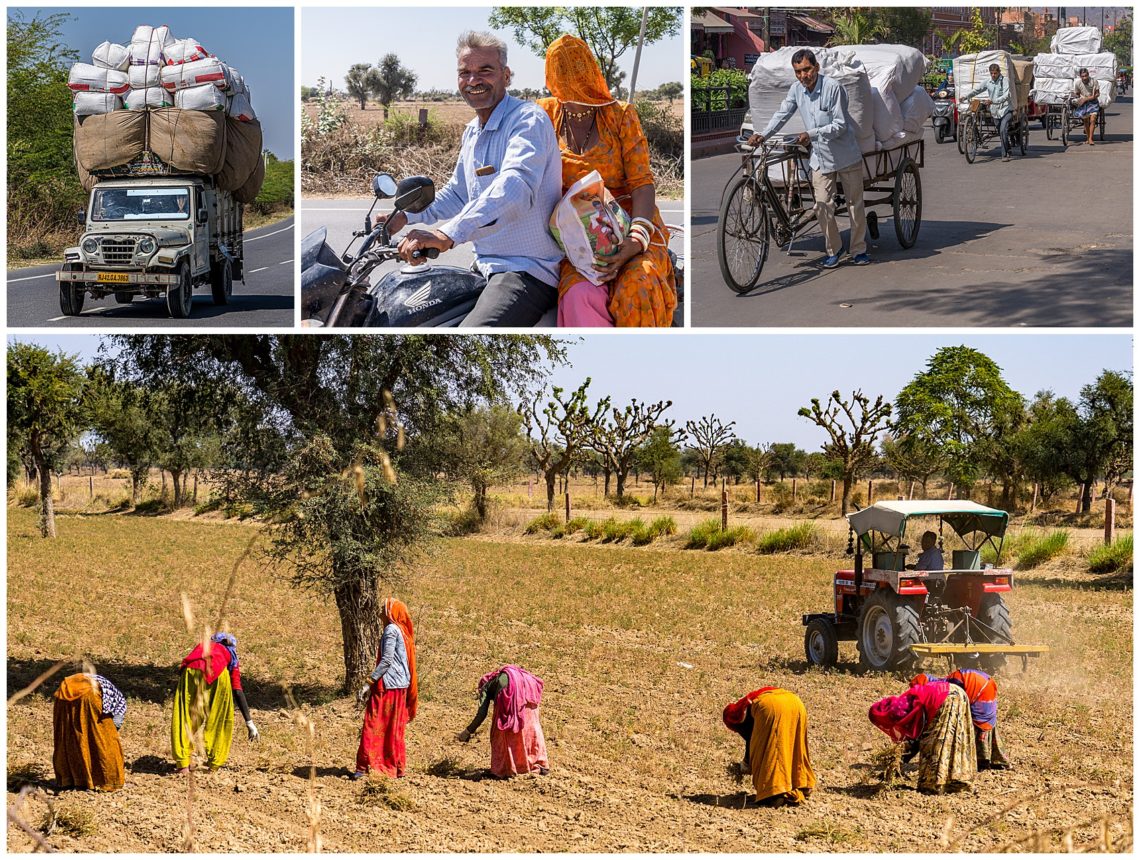
Indian women dress well, even when they’re out in the field. These were women that we stopped to photograph enroute to Jaipur (bottom). It’s always startling and jaw-dropping seeing how bulk items are transported along the roads in India (top).
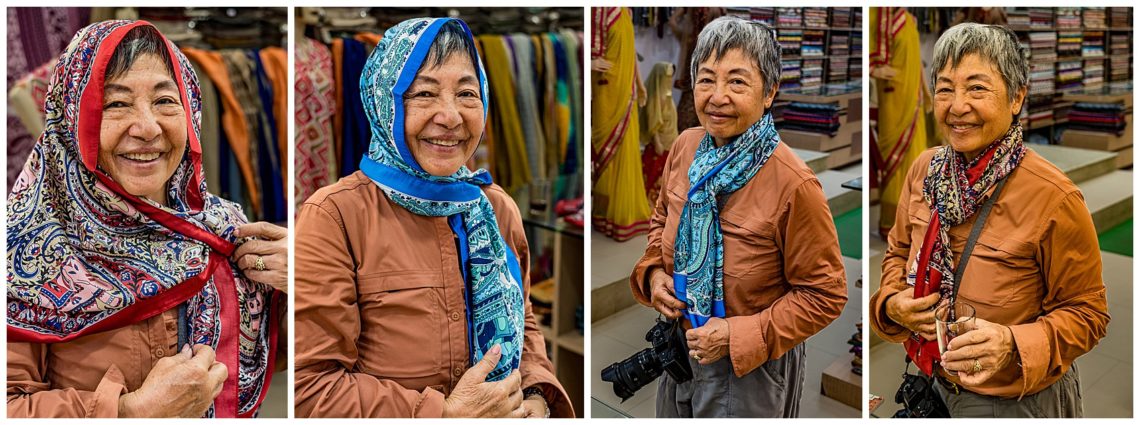
In a city known for their textiles, Evelyn decided to see the different ways to wear scarves.